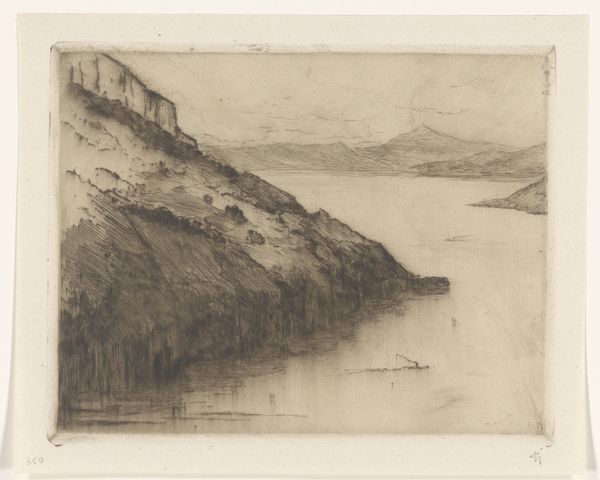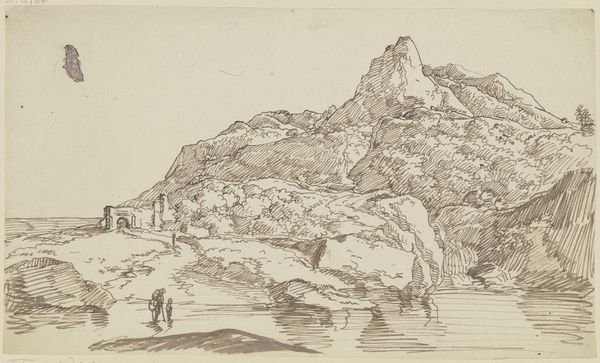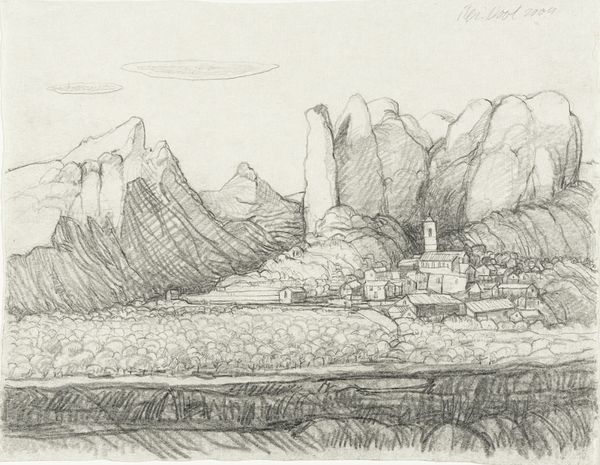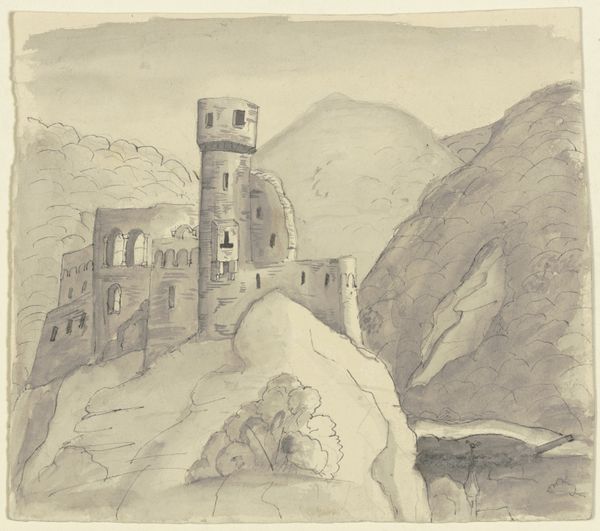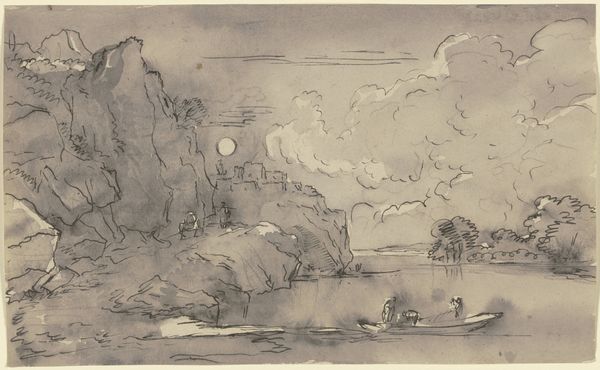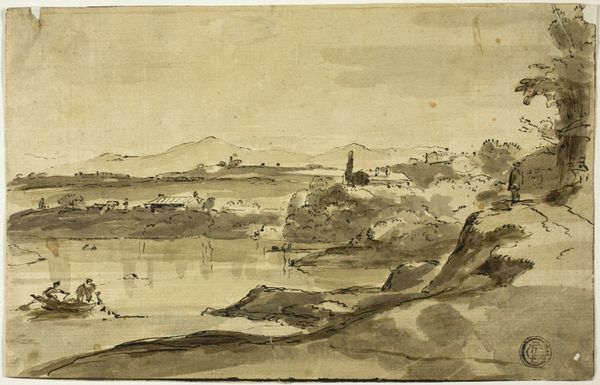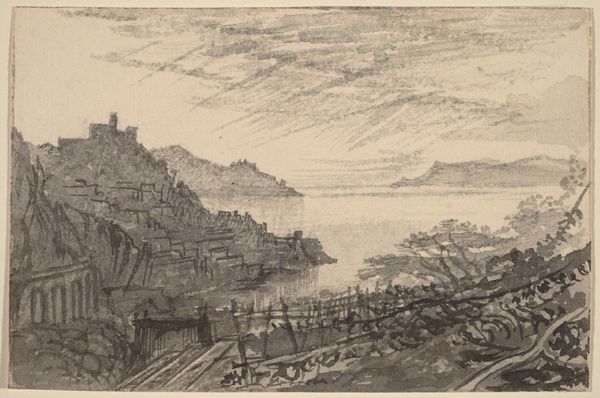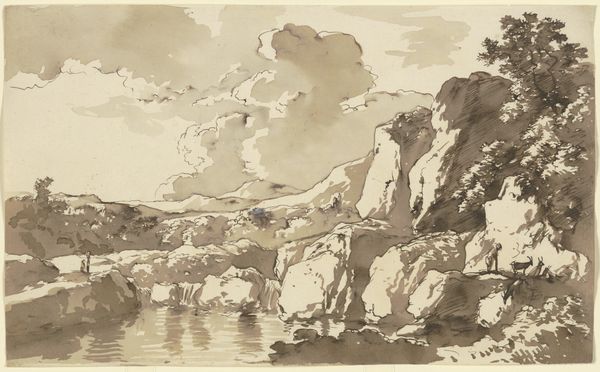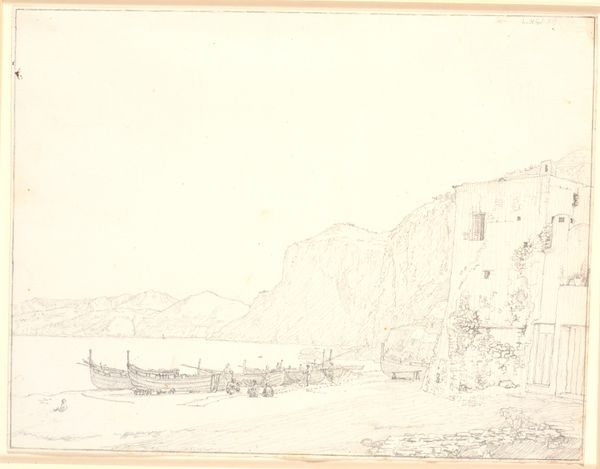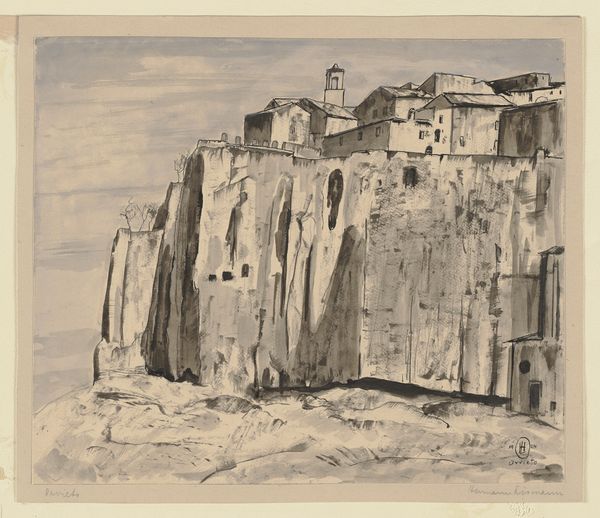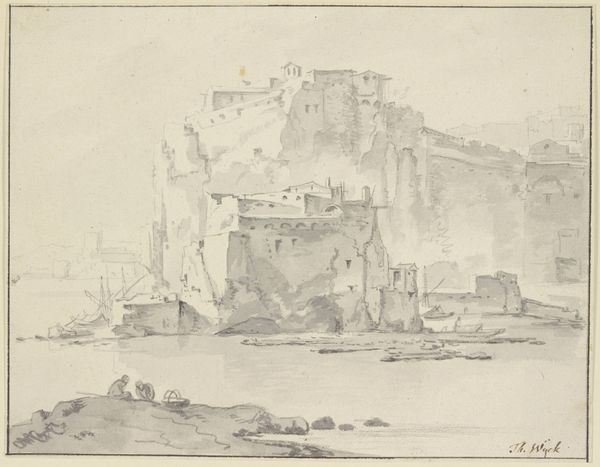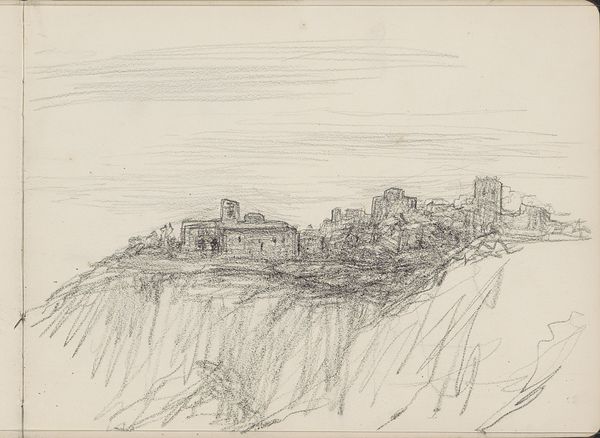
drawing, ink
#
drawing
#
landscape
#
ink
#
cityscape
Copyright: Public Domain
Curator: Here we have Hermann Lismann's 1921 ink drawing, "Manarola Liguria vom Boot aus," a stunning depiction of the Italian coastal town. Editor: My first impression is one of imposing strength. The buildings and the mountain seem fused, monolithic even. Curator: Absolutely, and I think that fusion speaks to a powerful commentary on resilience in the face of geographical and societal constraints. This region was known for its precarious existence, relying heavily on resourcefulness to maintain communities. Editor: You can definitely see how the built environment almost seems to organically emerge from the natural landscape; how did he even approach representing those stone textures with ink? Curator: That's part of Lismann’s genius; there’s such an attentiveness to the material reality of the scene. This place is essentially built from its own environment, which in turn provided labor and sustenance for the population that lives here. Editor: And yet, despite that connection, there's a somber quality to it, perhaps amplified by the almost complete lack of color? It emphasizes the isolation, maybe, both from other communities and also perhaps the human element within this rigid system. Curator: Precisely. It asks us to consider the people behind this picturesque view, those whose labor literally shaped these landscapes and their place within shifting social, political, and economic forces. The black-and-white ink adds another dimension too—a flattening that feels simultaneously historical and perpetually modern, questioning how progress manifests itself within uneven distribution and resources. Editor: So, on the one hand, it presents a beautiful scene but simultaneously compels us to examine what resources or historical processes shaped this landscape in its creation. It asks us to appreciate beauty, while always understanding that there's this element of labor that has to also be present in that reading. Curator: Yes, and perhaps more broadly, a critical understanding is key to appreciate the multifaceted contexts shaping artistic representations throughout history, which ultimately reflect the complex conditions in lived human experience across eras. Editor: And by extension, by thinking about how an artist chooses material we gain more than aesthetic appreciation for just form, but perhaps social awareness around how our environments affect what is rendered visually.
Comments
No comments
Be the first to comment and join the conversation on the ultimate creative platform.
